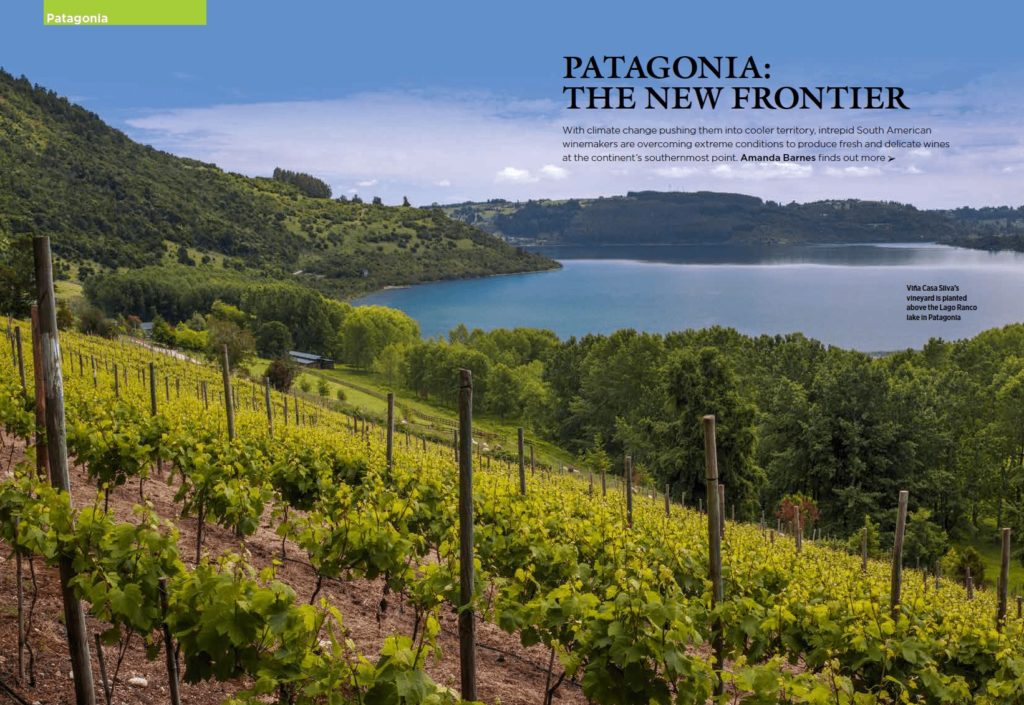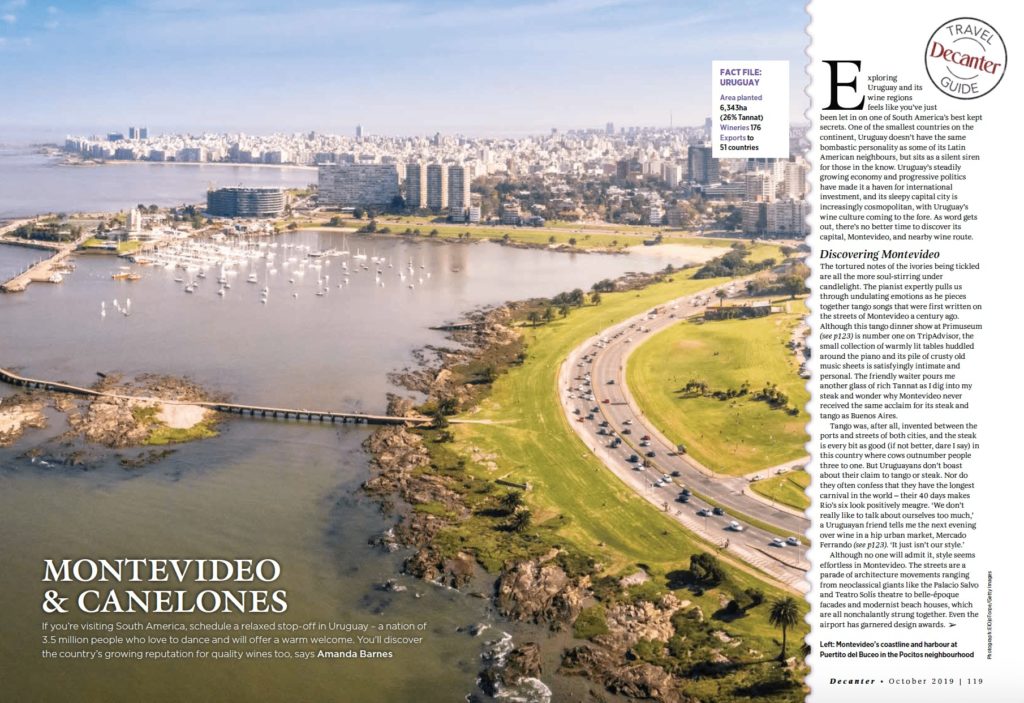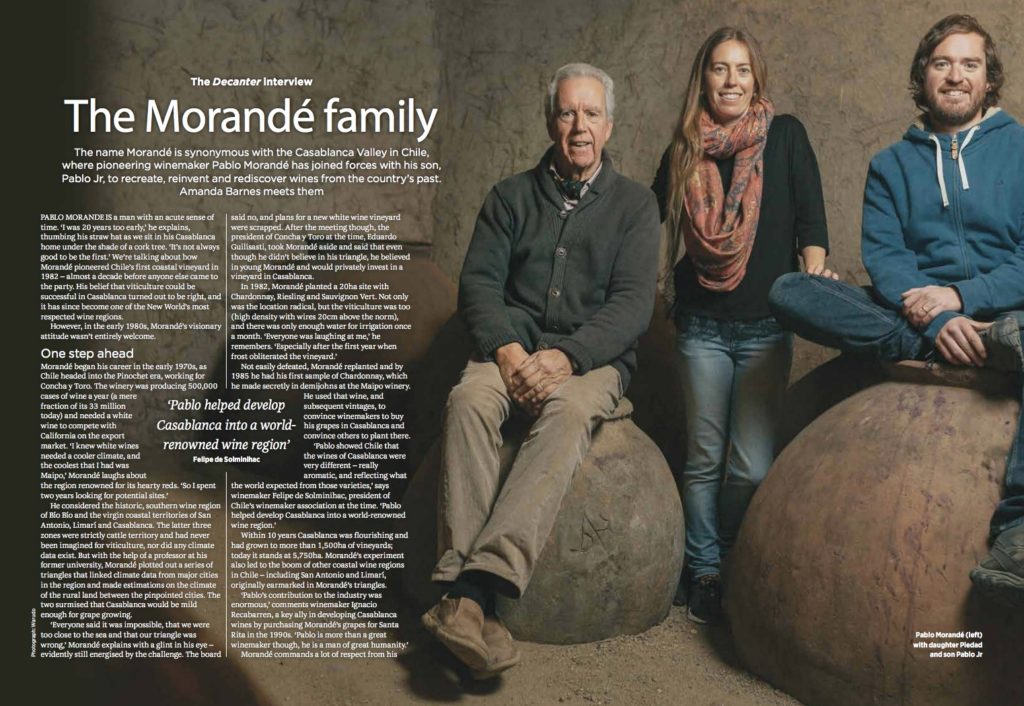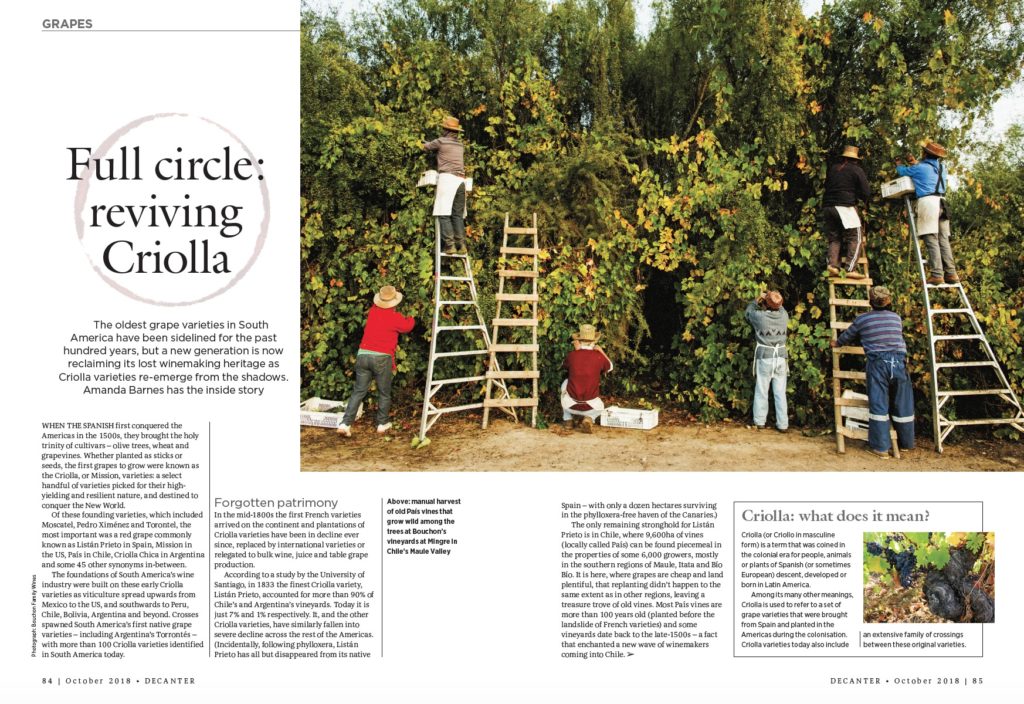Decanter: South America’s winemakers take flight

Winemakers in South America are embarking on a new era – one of quiet self-confidence and curious self-discovery, bringing forth some of the most exciting and individual wines yet. Distinctive regional personality is at the core of this new movement and it highlights a strong departure from the varietal – and style-driven wines that dominated […]
Decanter: Cabernet Franc Panel Tasting

September 2023 Edition. Cabernet Franc is undoubtedly a rising star of the Americas. Although still niche, it has been steadily rising in theranks and playing a greater role in each of the major wine countries. Its leafy, peppery, fresh, fragrant style can offer the ideal counterpart to the richer styles of heavyweight champion varieties such […]
Patagonia: South America’s new frontier. Decanter 2019

Written for Decanter Magazine, October 2019 In the last decade, winemakers in Chile and Argentina have moved beyond what was seen as the final frontier for South American viticulture — into the cool climates and wild terrains of Patagonia. Growing confidence and expertise; a quest for lower temperatures and greater water availability in the face […]
Exploring Montevideo & Canelones in Uruguay

Written for Decanter Magazine, October 2019 Exploring Uruguay and its wine regions feels like you’ve just been let in on one of South America’s best kept secrets. One of the smallest countries on the continent, Uruguay doesn’t have the same bombastic personality as many of its Latin American neighbours but sits as a silent siren […]
A Croatian Odyssey: Decanter special

Published in Decanter magazine, July 2019 The diverse regions of Croatia offer plenty for wine tourists to enjoy. Join Amanda Barnes as she tours the Croatian Uplands, Slavonia and Danube in the north of the country, then head to the coast with Anthony Rose as he travels south, from Istria to Dalmatia. While the coast […]
Decanter Interview: Pablo Morande, Father & Son

Published in Decanter Magazine, July 2019 The name Morandé is synonymous with the Casablanca Valley in Chile, where pioneering winemaker Pablo Morandé has joined forces with his son, Pablo Jr, to recreate, reinvent and rediscover wines from the country’s past. Amanda Barnes interviews them (PDF Pablo Morande Interview). Pablo Morande is a man with an […]
How to order wine like a pro

Decanter, September 2018 Do your research If you really want to appear like a pro to the rest of the room, do your research beforehand. Most fine dining restaurants have a wine list and menu available online, so scope out potential wines for the meal and identify any dishes that present wine pairing triumphs or […]
The ‘Criolla’ wine revival: a taste of South American wine history

The oldest grape varieties in South America have been sidelined for the past hundred years, but a new generation is now reclaiming its lost winemaking heritage as Criolla varieties re-emerge from the shadows. Amanda Barnes has the inside story… Published in Decanter Magazine, October 2018 When the Spanish first conquered the Americas in the 1500s, […]
Interview: Daniel Pi

Never more comfortable than when breaking the winemaking mould, the Peñaflor veteran is a central figure in the story of Argentina’s wine industry, as Amanda Barnes reveals in this interview with Daniel Pi… Published in Decanter magazine, October 2018 Overseeing the production of more than 200 million litres of wine each year, Daniel Pi doesn’t […]
Chile Vintage 2018 Report

Timing of the harvest was back to normal, a relief following the hot and early harvest of 2017, and maturation periods were steady without any extreme events. ‘We had a cold and wet winter,’ De Martino winemaker Eduardo Jordan told Decanter.com, who produces wine around the country. ‘A warm spring brought excellent bud break. The moderate and […]

